20+ years of experience
Contact usWhat is Tensile Structure? – Complete Guide by Ekra Decor Pvt. Ltd.
When it comes to modern architecture and cost-effective outdoor solutions, tensile structure are revolutionizing the way we build. From stylish canopies to weatherproof roofing, tensile fabric structures combine functionality, aesthetic appeal, and durability.
In this guide, you'll discover:
- What is a tensile structure?
- Types of tensile structures
- How they work
- Their real-world applications
- Benefits over traditional structures
- Why Ekra Decor Pvt. Ltd. is India’s preferred tensile solution provider
Whether you're an architect, business owner, contractor, or simply exploring shade structure options, this page will help you make an informed decision.
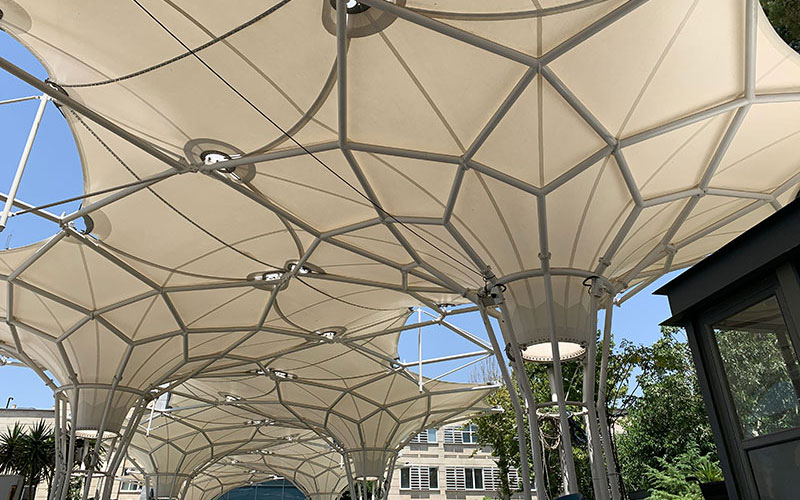
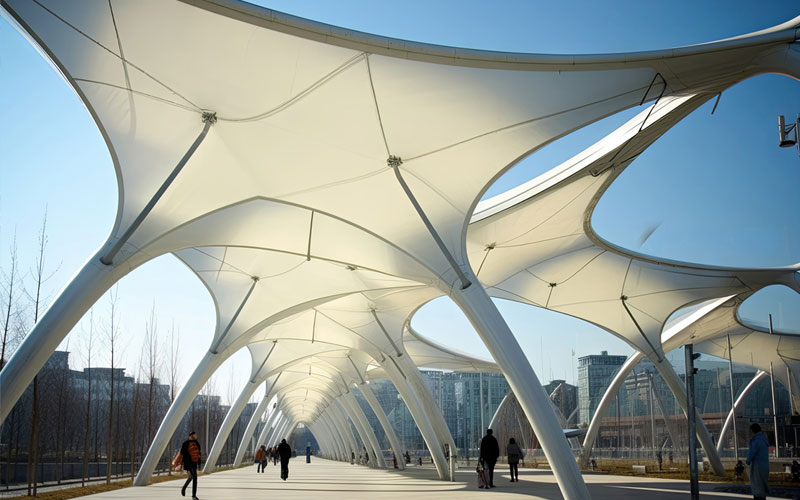
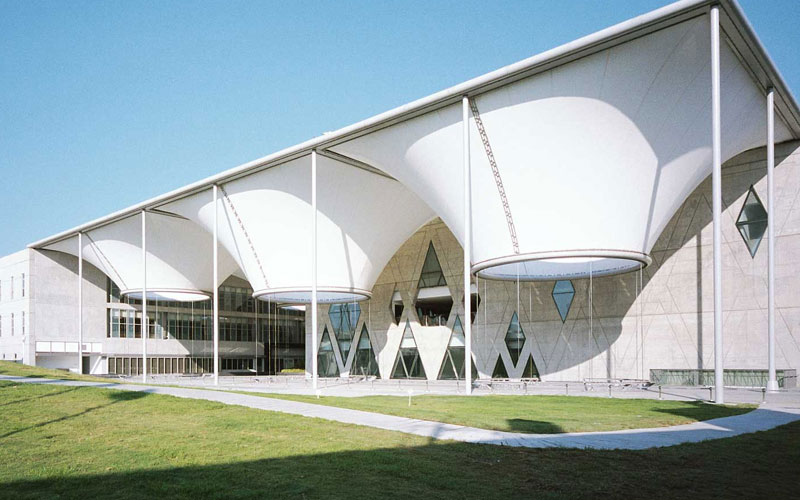
What is a Tensile Structure?
A tensile structure is a construction system where the fabric or membrane is stretched and held in place using tension forces. Unlike traditional buildings that rely on heavy frames and compression, tensile structures use lightweight materials and cables to create tension-based stability.
The key feature is its ability to span large areas with minimal material, making it ideal for cost-effective and elegant architectural solutions.



How Do Tensile Structures Work?
Tensile structures rely on pulling forces (tension), unlike conventional structures that rely on pushing forces (compression). The system uses:
- Fabric Membranes (like PVC, PTFE, or HDPE)
- Steel Cables or Ropes
- Anchor Points or Poles
The fabric is stretched and tensioned, often into curved shapes, creating an architectural design that is both strong and visually striking. This tension redistributes stress efficiently across the entire structure, ensuring stability, durability, and flexibility.
Main Components of a Tensile Structure
- Membrane/Fabric: The visible surface made from waterproof and UV-resistant material.
- Supporting Frame/Poles: Usually made from mild steel or galvanized iron.
- Tensioning Systems: Cables, turnbuckles, and hardware used to stretch and maintain tension.
- Anchor Points: Foundations or structures that hold the entire system securely.
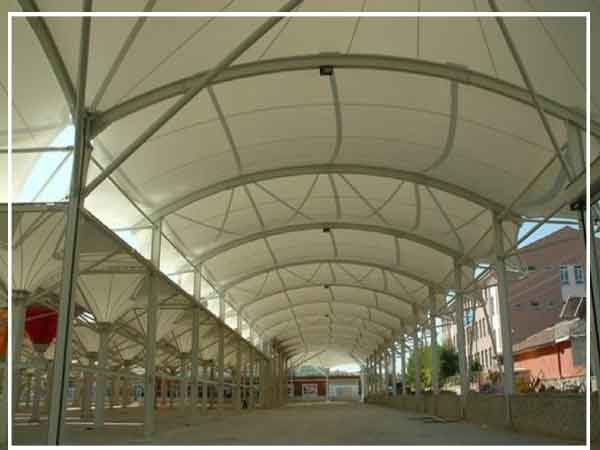
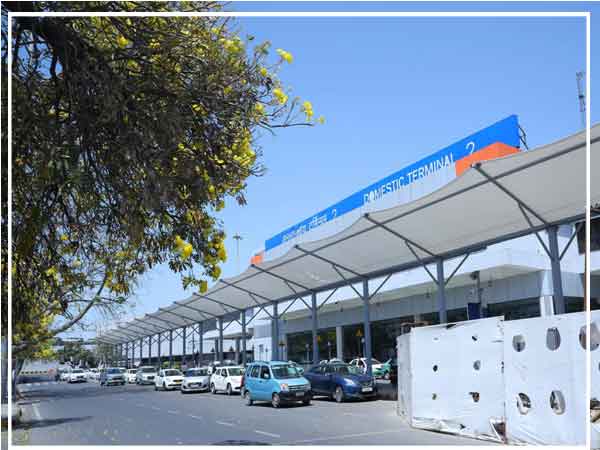
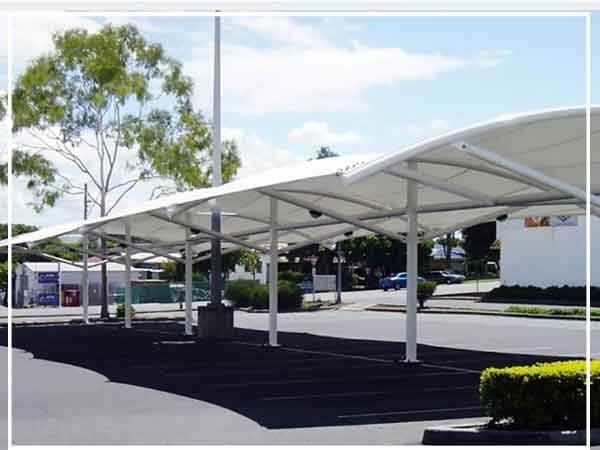
Types of Tensile Structure
At Ekra Decor Pvt. Ltd., we offer a wide variety of tensile structures to match specific use-cases and design preferences:
- Car Parking Tensile Structures: Ideal for protecting vehicles from sun and rain. Popular in malls, hospitals, office buildings, and residential societies.
- Walkway Coverings: Provide covered paths in campuses, parks, hotels, and industrial premises.
- Tensile Canopies: Used for entrances, cafes, terraces, or gathering areas—combining shade and aesthetic appeal.
- Swimming Pool Covers: Durable and waterproof solutions for residential, resort, or club pools.
- Gazebo Tensile Structures: Add beauty and functionality to gardens, resorts, and rooftop lounges.
- Stadium and Auditorium Covers: Large-span structures for outdoor audience spaces that require no internal support columns.
- Tensile Roofing: Used on rooftops, terraces, and outdoor spaces to protect against extreme weather.
Applications of Tensile Structures
Tensile structures are used in a wide range of sectors due to their versatility:
Tensile structures are ideal for:
- Commercial Spaces: Shopping complexes, hotels, and restaurants.
- Public Infrastructure: Railway stations, bus stops, airports.
- Educational Institutions: School courtyards, playground covers, auditoriums.
- Industrial Units: Warehouses, loading/unloading bays.
- Residential Projects: Carports, rooftop shades, and garden gazebos.
- Events & Exhibitions: Temporary pavilions, stalls, or shade for gatherings.
At Ekra Decor Pvt. Ltd., we use only the highest quality materials sourced from global suppliers. Our team carefully designs each structure to match your architectural vision and site conditions.
Advantages of Tensile Structures
- Cost-Effective: Minimal material usage and fast installation reduce both material and labor costs.
- Lightweight: Easier to transport, fabricate, and install compared to traditional roofs.
- Weather Resistant: High-grade tensile fabrics are waterproof, UV-resistant, and capable of withstanding strong winds and heavy rain.
- Design Flexibility: Can be shaped into curves, cones, and free-form geometries for a futuristic look.
- Quick Installation: Pre-engineered materials and simplified site work ensure rapid deployment.
- Eco-Friendly: Allows natural light to pass through, reducing energy consumption.
At Ekra Decor Pvt. Ltd., we use only the highest quality materials sourced from global suppliers. Our team carefully designs each structure to match your architectural vision and site conditions.
Why Choose Ekra Decor Pvt. Ltd. for Tensile Structures in India?
About Us
Ekra Decor Pvt. Ltd. is a Delhi-based company specializing in designing, manufacturing, and installing tensile structures across PAN India. With years of experience and hundreds of completed projects, we are a trusted name in the industry.
What Sets Us Apart?
- In-house Design & Engineering Team
- Customized Solutions for Every Client
- Use of Premium Materials like PVC, PTFE & HDPE
- Robust & Corrosion-Resistant Steel Structures
- Timely Execution & After-Sales Support
- PAN India Project Execution (Metro & Non-Metro Cities)
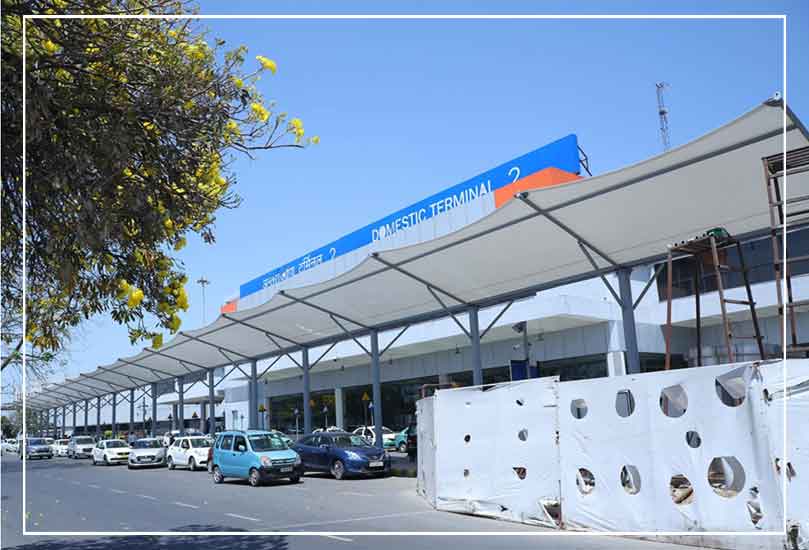
Client Testimonial
"We approached Ekra Décor for a tensile canopy for our hotel entrance. The structure is elegant, durable, and adds a modern touch to our façade. Their team was professional from start to finish! Highly recommended."
— Amit Verma, Hotel Owner, JaipurFrequently Asked Questions (FAQs)
A tensile structure is a construction of elements carrying only tension and no compression or bending. They are used as lightweight roofing systems and can cover large areas efficiently.
Yes. At Ekra Decor Pvt. Ltd., we use advanced membranes that are resistant to UV rays, corrosion, and heavy rainfall. Our structures are built to last for decades with minimal maintenance.
Absolutely. We provide tailored solutions that fit your site specifications, color preferences, and functional needs. Customization is a key strength of Ekra Decor Pvt. Ltd..
Installation time varies by project size, but our streamlined process ensures fast delivery. Small canopies can be installed in days; large infrastructure takes a few weeks.
Costs depend on size, material, design complexity, and installation conditions. Contact Ekra Decor Pvt. Ltd. for a free consultation and competitive pricing.
Conclusion
A tensile structure is more than just a roof—it's a modern architectural solution that balances aesthetics, durability, and cost-effectiveness. If you're planning a project that requires shade, shelter, or architectural flair, a tensile structure might be your best option.
Ekra Decor Pvt. Ltd. brings expertise, innovation, and professionalism to every project. Contact us today and let's turn your idea into a structure that stands out.